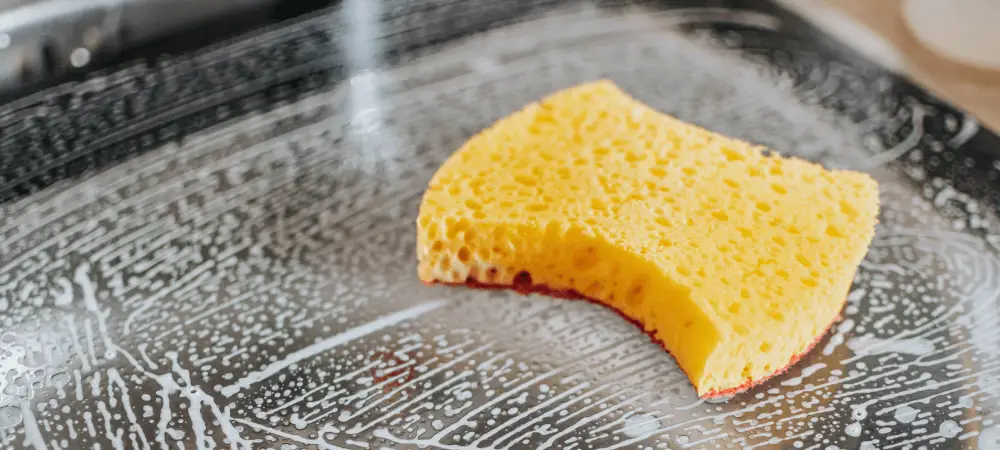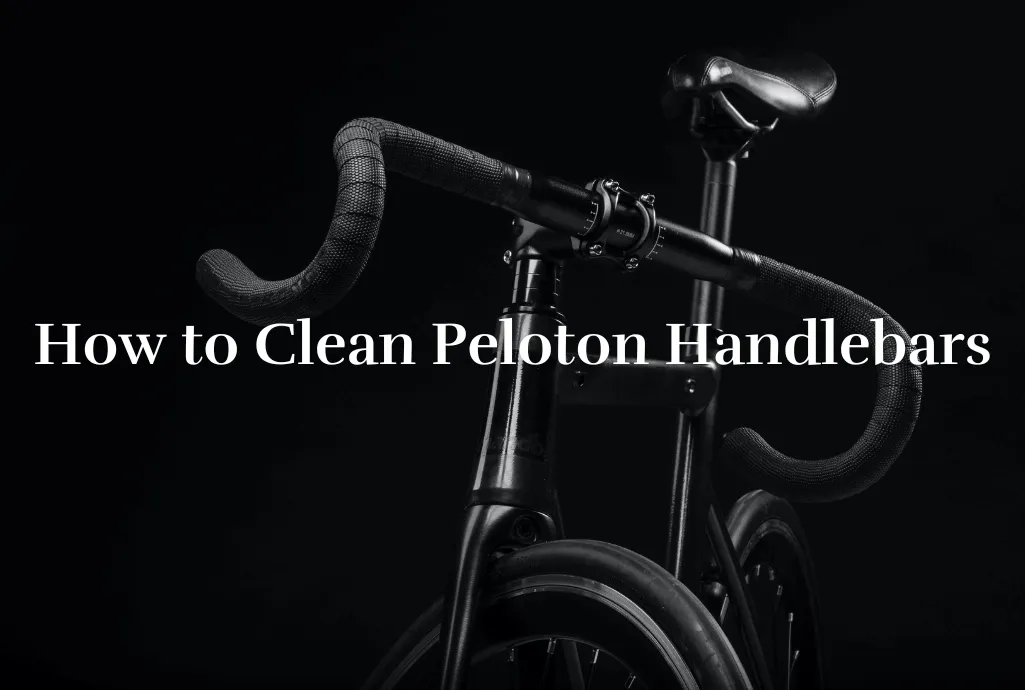Table of Contents
Maintaining clean Peloton handlebars is crucial for upholding a hygienic environment and extending the lifespan of your equipment. While cleaning the handlebars might seem easy, our experience reveals that questions arise more frequently than expected.
This article is written to be a comprehensive guide that will provide step-by-step instructions and in-depth details to how to clean Peloton handlebars quickly and keep them sparkling clean.
Understanding the Importance of Cleaning Peloton Handlebars
Regular cleaning of your Peloton handlebars is crucial for several reasons. First and foremost, it helps maintain a hygienic workout environment by removing sweat, germs, and bacteria that accumulate during your workouts. Additionally, cleaning the handlebars ensures their longevity by preventing dirt and grime buildup, which can lead to premature wear and tear.
Gather the Necessary Cleaning Supplies
Before you begin cleaning your Peloton handlebars, gather the following cleaning supplies:
- Microfiber cloths are gentle on the handlebars and effectively remove dirt and residue without scratching the surface. Paper towels work too.
- Mild detergent: Opt for a gentle, non-abrasive detergent suitable for delicate surfaces.
- Water: Plain water will be used in combination with detergent for cleaning.
- Spray bottle: This will spray the cleaning solution onto the microfiber soft cloth.
- Soft-bristle brush (optional): A soft-bristle brush can be used for stubborn residue or hard-to-reach areas.
Preparing for Cleaning
- Switch off your Peloton bike: Before cleaning, ensure the bike is turned off to avoid accidents.
- Allow the handlebars to cool: Handlebars can become hot during intense workouts, so make sure they are cool to the touch before proceeding with cleaning.

How to Clean Peloton Handlebars: Step-by-Step Cleaning Guide
Step 1: Dusting the Handlebars
Take a clean, dry microfiber cloth and gently wipe down the handlebars, removing any loose dust or debris. Pay attention to all surfaces, including the grips and the underside of the handlebars.
Step 2: Preparing the Cleaning Solution
Mix a small amount of mild detergent in a spray bottle with water. Shake the bottle gently to ensure the solution is well-mixed.
Step 3: Cleaning the Handlebars
Dampen a microfiber cloth or cleaning wipe with the cleaning solution. Make sure the damp cloth isn’t saturated. Excess moisture can damage the electronics on the bike.
Wipe down the entire surface from one end of the handlebars, applying gentle pressure to remove any dirt or grime. Pay extra attention to areas where sweat accumulates, such as the grip area.
Use a soft-bristle brush dipped in the cleaning solution for stubborn residue or hard-to-reach areas. Gently scrub the affected areas, being careful not to apply excessive force.
Step 4: Rinse and Dry the Handlebars
After wiping down the handlebars with the cleaning solution, rinse the microfiber cloth with clean water. Wipe down the handlebars again to remove any soapy residue.
Once you’ve finished rinsing, take a clean, dry microfiber cloth and thoroughly dry the handlebars. Ensure that no moisture remains on the surface or in any crevices.
Additional Cleaning Tips and Considerations
Maintenance and Care Tips
- Inspect your handlebars regularly for any signs of wear or damage.
- Avoid harsh chemicals or abrasive cleaning agents, as they can damage the finish of the handlebars.
- If your handlebars have covers or grips, clean them separately according to the manufacturer’s instructions.
- Use Peloton sweat towel or microfiber towel on your handlebars every time you have a workout.
- Baby wipes are great for quick cleaning.
- Don’t forget to maintain your Peloton screen.
Conclusion
By following this comprehensive guide, you can ensure that your Peloton handlebars remain clean and hygienic. Regular cleaning provides a pleasant workout experience and contributes to the longevity of your Peloton equipment. Incorporate these cleaning practices into your routine for a sparkling clean workout every time.
Frequently Asked Questions (FAQ):
How Often Should I Replace My Peloton Handlebar Covers?
Peloton handlebar covers are designed to provide comfort and grip during your workouts. Over time, these covers may experience wear and tear, losing effectiveness and becoming less hygienic. While the replacement frequency may vary depending on individual usage and maintenance, here are some guidelines to help you determine when to replace your Peloton handlebar covers:
- Visual Inspection: Regularly inspect your handlebar covers for any visible signs of wear, such as cracks, tears, or fraying. If you notice significant damage or deterioration, it’s time to replace them.
- Cushioning and Grip: Pay attention to the cushioning and grip the handlebar covers provide. Suppose you feel a significant decrease in comfort or notice that the grip has become less secure. In that case, it may indicate that the covers need replacement.
- Hygiene: Handlebar covers can accumulate sweat, dirt, and bacteria over time, especially during intense workouts. Suppose you find it challenging to clean the covers effectively or notice a persistent odor. In that case, it might be best to replace them for hygiene reasons.
- Usage Frequency: Consider how frequently you use your Peloton bike. Suppose you use it daily or for extended periods. In that case, the handlebar covers will likely experience more wear and tear, requiring more frequent replacements than less frequent users.
As a general guideline, replacing your Peloton handlebar covers every six to twelve months is recommended, depending on the factors mentioned above. However, it’s essential to regularly evaluate your handlebar covers’ condition and replace them when necessary to maintain optimal comfort, grip, and hygiene during your workouts.
Remember to consult the Peloton manufacturer’s guidelines and recommendations regarding handlebar cover replacements for specific models or consult customer support for further assistance.
Do I Need to Remove My Peloton Handlebar Cover Before Cleaning?
Cleaning your Peloton handlebars is essential to maintaining hygiene and prolonging the lifespan of your equipment. When it comes to cleaning, it is generally recommended to remove the handlebar cover for a more thorough and effective cleaning process. Here are a few reasons why removing the handlebar cover can be beneficial:
- Deeper Cleaning: Removing the handlebar cover allows you to access hard-to-reach areas that may accumulate dirt, sweat, or grime over time. By removing the cover, you can clean the handlebars more comprehensively, ensuring a thorough cleaning process.
- Preventing Moisture Buildup: During intense workouts, sweat can seep into the handlebar cover, creating a potential breeding ground for bacteria and unpleasant odors. Removing the cover can clean and dry the handlebars more effectively, reducing the risk of moisture buildup and maintaining a hygienic environment.
- Maintenance and Inspection: Removing the handlebar cover provides an opportunity to inspect the condition of the cover and the handlebars. You can check for any signs of wear, damage, or accumulated debris, ensuring the cover and handlebars are in good condition.
While removing the handlebar cover is recommended for a thorough cleaning, it’s important to note that some Peloton models may have different handlebar cover designs or specific instructions from the manufacturer. Therefore, it is advisable to consult the Peloton user manual or contact customer support for guidance tailored to your specific model.
Removing the handlebar cover before cleaning allows for a more comprehensive cleaning process, preventing moisture buildup and ensuring a hygienic workout environment. However, refer to the manufacturer’s guidelines or seek professional advice to ensure you follow the recommended cleaning procedures for your specific Peloton model.
Can I use disinfectant wipes to clean my Peloton handlebars?
While disinfectant wipes can be convenient, avoiding using them on your Peloton handlebars is best. Some wipes contain chemicals that can be harsh on the handlebar surfaces and may cause damage.
How often should I clean my Peloton handlebars?
Clean your Peloton handlebars after each use or at least once a week if you use the bike regularly. Adjust the frequency based on your personal usage and hygiene preferences.
Can I use ordinary clothes to clean my Peloton handlebars?
It’s recommended to use microfiber cloths for cleaning Peloton handlebars. Ordinary clothes may be less effective in removing dirt and could scratch the surface.
Can I clean my Peloton handlebars with water alone?
While water can be used, it’s advisable to use a mild detergent for more effective cleaning. The detergent helps break down sweat and grime, leaving your handlebars cleaner.
Is it okay to use Clorox wipes to clean the handlebars of my Peloton bike?
Yes. They effectively disinfect and remove germs from surfaces, including the handlebars of exercise equipment like your Peloton bike or Peloton screen.

